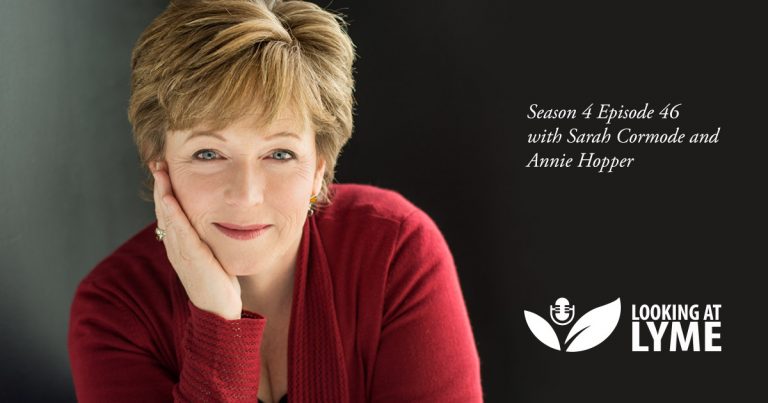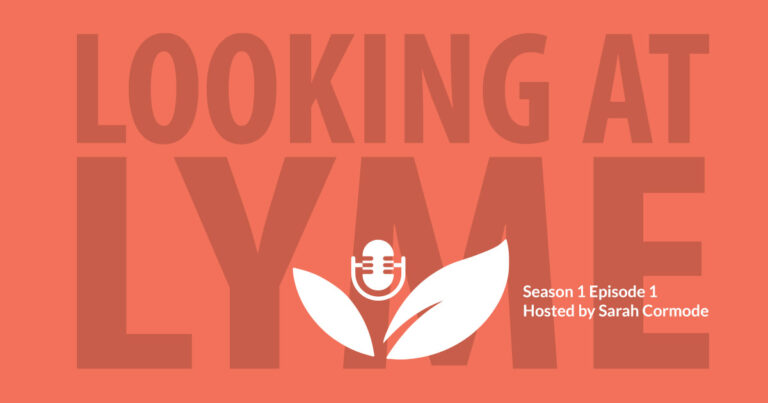38. Dr. Jill Bolte Taylor on the beauty and resilience of the brain
Whole Brain Living: the Anatomy of Choice in advancing wellness.

Welcome back to the Looking at Lyme Podcast… here we are in Season 3! In this episode, Sarah explores how the brain functions with Dr. Jill Bolte Taylor. Dr. Jill was working as a neuroanatomist, teaching and conducting research at the Harvard School of Medicine when she experienced a severe hemorrhagic stroke. After recovering from that stroke, Dr. Jill wrote about her experience and has travelled the world giving inspirational talks, including one of the first TED talks to go viral! She describes that fascinating experience in her first book “My Stroke of Insight” and joins us today to talk about what she refers to as “Whole Brain Living”, which is also the title of her new book.
The stroke: a right brain experience
Dr. Jill recalls her experience of having a stroke, which happened at age 37 while working as a brain scientist. From the time the stroke began, until 4 hours later when everything went black, she was able to observe the process, and subsequently recall that process as well. Her experience created a shift in self perception from being focussed on her individual self to a focus on the whole of humanity. With this shift she also experienced deep gratitude and began to look at how she could be of service to humanity.
Right and left brain differences: it’s about time…
Being a brain scientist and experiencing a stroke also gave Dr. Jill a unique perspective on the differences between the right and left sides of the brain. She explains that thoughts and feelings occurring on the right side of the brain relate to present moment experience, in which we are open, expansive and “as big as the universe”.
The left brain deals with past and future, time, right vs wrong, and enables us to identify ourselves from the world around us. Because her stroke affected the left side of her brain, concepts of time and her ability to perceive herself as a separate individual were replaced with a sense of vastness and peace. Although this was a blissful experience, Dr. Jill explains that she was essentially unable to function, and made the choice to work to recover her left brain function. She describes the point in her recovery when she could sculpt an abdomen but she did not know what it was called or how it functioned. Is it possible to experience the vastness and peace inherent in our right brain, without having a stroke? Dr. Jill explains that practices such as meditation and prayer help to slow down the chatter of the left brain, allowing right brain experiences and enabling people to become more compassionate.
“If people realize that all they had to do was quiet the noisy left language centres in our left hemisphere, then they too could find this peace.”
Dr. Jill Bolte Taylor
The limbic system and learning
Dr. Jill gives us some insight into how the limbic system in our brain functions. She points out that we have one amygdala and one hippocampus for each side of our brain, and that their function depends on which side of the brain they are in. For example, emotions generated in the right hemisphere relate to present moment experience, whereas emotions generated in the left hemisphere are related to our concepts of past and future.
She further explains that when information reaches the amygdala, if that information tells us we are safe, the hippocampus is activated and helps us to feel calm and allows learning to occur. Conversely, if we do not feel safe, the cells in our hippocampus shut down, and the focus now shifts to a state of self-preservation where we feel we need to manage the situation.
“The right hemisphere is all about right here, right now…the left hemisphere has a past and a future and it also has a group of cells that define the boundaries of where we begin and where we end.”
Dr. Jill Bolte Taylor
The brain’s four “characters”
In her new book, Dr. Jill describes the four areas of our brain for thinking and feeling in the present moment and in relation to past and future. To help understand how the different areas function and their unique “personalities”, she attributes characters to each of the four areas and encourages listeners to name their own characters.
“When you look at these four modules of cells [one for thinking and feeling in each hemisphere of the brain], they don’t just exhibit abilities or skill sets, but they go with personalities.”
Dr. Jill Bolte Taylor
For example, the left brain thinking tissue relates to rational, critical and moral thinking, details, creating order and controlling outcomes. In other words, our “Type A” personality. The left brain emotional tissue relates to our past, and pain, trauma, guilt and shame and is also related to addiction. The right brain emotional tissue relates to the present moment and is experiential as well as creative, innovative, interested, curious, and socially connected with others. The right thinking brain is where we experience awe as well as gratitude for simply being alive.
Why is it helpful to understand our four characters? Dr. Jill explains that getting to know how the characters work, understanding which ones are dominant in any situation and being able to choose the character we want to dominate in each moment. Through this process, which she calls the “brain huddle”, we can consciously choose who and how we want to be in the world.
“Helping people really integrate and understand these four characters, and then the brain huddle and how to bring them into communication, so that we have the power to choose moment by moment who and how we want to be in the world, especially as we’re dealing with managing any kind of an illness… what part of me is showing up and what part might I choose to show up instead. What is most appropriate for me as I take in order to advance my wellness instead of my illness.
Dr. Jill Bolte Taylor
Lyme disease from a cellular perspective
Dr. Jill gives us some insight into how to approach brain issues due to Lyme Disease on a cellular level. She describes how quality sleep enables our brain cells to rest and also enables waste products to be removed. She also suggests that we become more aware of what we are putting into our bodies, noting that we literally are what we eat.
As well as proper nutrition and avoiding toxins, she explains the importance of avoiding sugar. She explains that sugar molecules are spiky molecules, like razor blades, that essentially slice up the walls of the cardiovascular system, causing inflammation. Her third suggestion is to keep our bodies moving to help our bodies remove waste.
Lyme disease and character management
Dr. Jill walks us through how each of the four characters might influence our experience of a disease such as Lyme. By noticing and understanding which characters are at play and choosing characters that are most helpful in each situation, we can change “who and how” we are in the world both in small ways and in profound ways as well. Thank you so much Dr. Jill for sharing your experience and expertise with us!
“When you look at these four modules of cells [one for thinking and feeling in each hemisphere of the brain], they don’t just exhibit abilities or skill sets, but they go with personalities.”
Dr. Jill Bolte Taylor
- Whole Brain Living: The Anatomy of Choice and the Four Characters That Drive Our Life
- TED Talk: My stroke of insight







